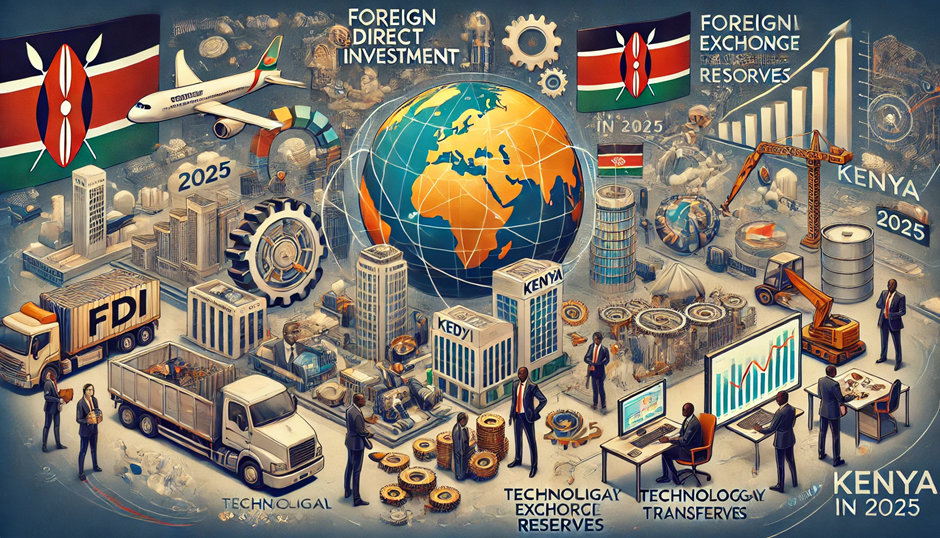
Nairobi vs. Mombasa vs. Kisumu: Which City Will Lead Kenya’s Business Boom by 2030?

Kenya’s economy is rapidly evolving, with urban centers competing to become the nation’s next major business hub. Nairobi, Mombasa, and Kisumu each hold unique advantages, from financial services and technology to trade and tourism. But which city is best positioned to lead Kenya’s business boom by 2030?
1. Nairobi: The Financial and Technology Capital
1.1 The Financial Powerhouse

Source: iStock
Nairobi, Kenya’s capital, is the economic heartbeat of East Africa. As home to the Nairobi Securities Exchange (NSE), major banks, and multinational corporations, the city attracts substantial foreign direct investment (FDI).
1.2 World-Class Infrastructure

Source: Tatu City
- Jomo Kenyatta International Airport (JKIA) serves as a key regional aviation hub.
- The Standard Gauge Railway (SGR) and extensive road networks enhance business connectivity.
- High-rise commercial buildings and modern office spaces create a thriving business environment.
1.3 The Silicon Savannah
- Nairobi’s reputation as Africa’s “Silicon Savannah” is fueled by a vibrant startup ecosystem.
- Global tech giants like Google, Microsoft, and IBM have established regional offices.
- Mobile money innovation, led by M-Pesa, has revolutionized digital finance.
2. Mombasa: The Gateway to Global Trade
2.1 Kenya’s Largest Port City

Source: The Business Year
Mombasa’s strategic location along the Indian Ocean makes it a vital trade hub. The Port of Mombasa, East Africa’s largest, facilitates imports and exports across the region.
2.2 Thriving Tourism and Hospitality Sector
- Mombasa’s pristine beaches and cultural heritage sites attract millions of tourists annually.
- The city’s hospitality industry is expanding with new luxury resorts, hotels, and conference centers.
- Tourism generates employment and boosts local businesses.
2.3 Infrastructure Expansion and Economic Growth

Source: FEAFFA
- The Dongo Kundu Special Economic Zone (SEZ) is set to boost industrialization.
- Ongoing port modernization projects will increase trade volumes and efficiency.
- The Mombasa-Nairobi SGR enhances cargo transportation, improving logistics for businesses.
3. Kisumu: The Emerging Regional Business Hub

Source: HapaKenya
3.1 The Heart of Western Kenya’s Economy
Kisumu, Kenya’s third-largest city, is witnessing rapid economic transformation. Positioned along Lake Victoria, Kisumu is poised to become a major trade and business hub for the western region.
3.2 Agriculture, Manufacturing, and Trade
- The city plays a critical role in Kenya’s agricultural value chain, with sugarcane, fish, and rice industries driving economic activity.
- Investment in agro-processing plants and industrial parks is expanding employment opportunities.
- The revival of Lake Victoria’s maritime transport strengthens regional trade with Uganda and Tanzania.
3.3 Infrastructure and Development Projects

Source: The East African
- Kisumu International Airport expansion is improving business and tourism connectivity.
- Road network upgrades and port modernization projects are strengthening transport links.
- The city is experiencing a real estate boom, with rising demand for commercial and residential properties.
4. Which City Will Lead Kenya’s Business Boom by 2030?
Each city presents distinct advantages, and future growth will depend on government policies, private-sector investments, and global economic trends.
Key Comparisons:
| Factor | Nairobi | Mombasa | Kisumu |
| Financial Sector | Strong banking & corporate presence | Growing fintech adoption | Expanding SME financing |
| Technology | Leading tech hub (“Silicon Savannah”) | Adoption of digital solutions | Increasing tech incubators |
| Trade & Logistics | Regional aviation & transport hub | Largest seaport & SGR access | Lake Victoria transport revival |
| Tourism & Hospitality | Business & conference tourism | Beach & cultural tourism | Eco-tourism & cultural heritage |
| Real Estate Growth | Rapid urban expansion | Coastal luxury developments | Emerging residential & commercial investments |
Final Verdict:
- Nairobi remains the dominant financial and technology hub, attracting top-tier investors.
- Mombasa is vital for trade, logistics, and tourism, solidifying its role as Kenya’s gateway to the global economy.
- Kisumu is emerging as a significant business hub, driven by regional trade, agriculture, and infrastructure development.
While Nairobi leads today, Mombasa and Kisumu are making strategic moves that could reshape Kenya’s business landscape by 2030.
Conclusion
Kenya’s business future is dynamic, with Nairobi excelling in finance and tech, Mombasa leading in trade and tourism, and Kisumu positioning itself as a regional economic powerhouse. Investors and businesses should evaluate each city’s strengths to make strategic decisions. As infrastructure, policies, and industries evolve, Kenya’s next business hub will be determined by innovation, investment, and sustainable growth.
References
- Kenya National Bureau of Statistics (KNBS): www.knbs.or.ke
- World Bank Kenya Economic Update: www.worldbank.org/en/country/kenya
- Central Bank of Kenya Reports: www.centralbank.go.ke
- Kenya Vision 2030: www.vision2030.go.ke








